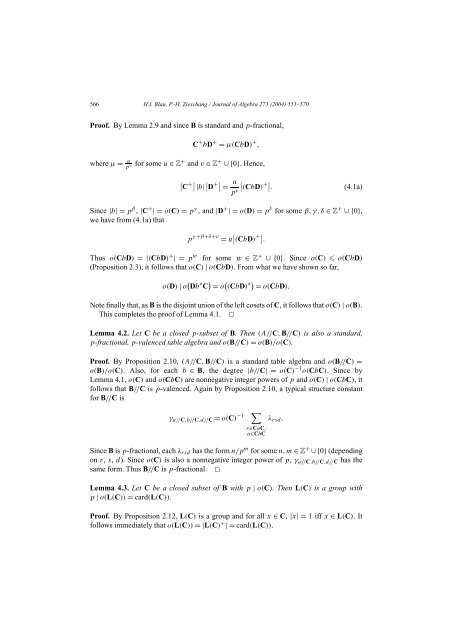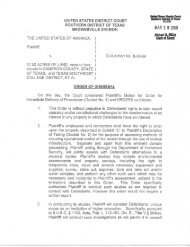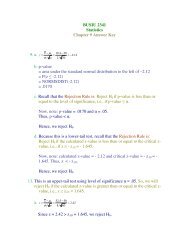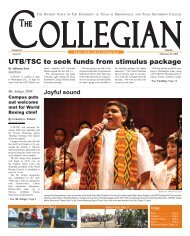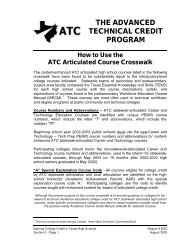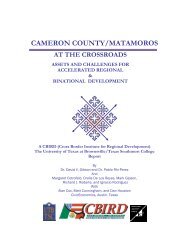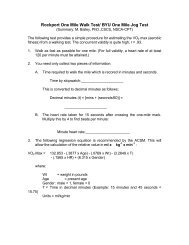Sylow theory for table algebras, fusion rule algebras, and ... - blue
Sylow theory for table algebras, fusion rule algebras, and ... - blue
Sylow theory for table algebras, fusion rule algebras, and ... - blue
You also want an ePaper? Increase the reach of your titles
YUMPU automatically turns print PDFs into web optimized ePapers that Google loves.
566 H.I. Blau, P.-H. Zieschang / Journal of Algebra 273 (2004) 551–570<br />
Proof. By Lemma 2.9 <strong>and</strong> since B is st<strong>and</strong>ard <strong>and</strong> p-fractional,<br />
C + bD + = µ(CbD) + ,<br />
where µ = u p v <strong>for</strong> some u ∈ Z + <strong>and</strong> v ∈ Z + ∪{0}. Hence,<br />
<br />
C + |b| D + = u<br />
p v<br />
<br />
+<br />
(CbD) . (4.1a)<br />
Since |b|=p β , |C + |=o(C) = p γ ,<strong>and</strong>|D + |=o(D) = p δ <strong>for</strong> some β,γ,δ ∈ Z + ∪{0},<br />
we have from (4.1a) that<br />
p γ +β+δ+v = u (CbD) + .<br />
Thus o(CbD) =|(CbD) + |=p w <strong>for</strong> some w ∈ Z + ∪{0}. Since o(C) o(CbD)<br />
(Proposition 2.3), it follows that o(C) | o(CbD). From what we have shown so far,<br />
o(D) | o Db ∗ C = o (CbD) ∗ = o(CbD).<br />
Note finally that, as B is the disjoint union of the left cosets of C, it follows that o(C) | o(B).<br />
This completes the proof of Lemma 4.1. ✷<br />
Lemma 4.2. Let C be a closed p-subset of B. Then(A//C, B//C) is also a st<strong>and</strong>ard,<br />
p-fractional, p-valenced <strong>table</strong> algebra <strong>and</strong> o(B//C) = o(B)/o(C).<br />
Proof. By Proposition 2.10, (A//C, B//C) is a st<strong>and</strong>ard <strong>table</strong> algebra <strong>and</strong> o(B//C) =<br />
o(B)/o(C). Also, <strong>for</strong> each b ∈ B, the degree |b//C| =o(C) −1o(CbC). Since by<br />
Lemma 4.1, o(C) <strong>and</strong> o(CbC) are nonnegative integer powers of p <strong>and</strong> o(C) | o(CbC),it<br />
follows that B//C is p-valenced. Again by Proposition 2.10, a typical structure constant<br />
<strong>for</strong> B//C is<br />
<br />
−1<br />
γa//C,b//C,d//C = o(C) λrsd.<br />
r∈CaC,<br />
a∈CbC<br />
Since B is p-fractional, each λrsd has the <strong>for</strong>m n/p m <strong>for</strong> some n, m ∈ Z + ∪{0} (depending<br />
on r, s, d). Since o(C) is also a nonnegative integer power of p, γa//C,b//C,d//C has the<br />
same <strong>for</strong>m. Thus B//C is p-fractional. ✷<br />
Lemma 4.3. Let C be a closed subset of B with p | o(C). ThenL(C) is a group with<br />
p | o(L(C)) = card(L(C)).<br />
Proof. By Proposition 2.12, L(C) is a group <strong>and</strong> <strong>for</strong> all x ∈ C, |x|=1iffx ∈ L(C). It<br />
follows immediately that o(L(C)) =|L(C) + |=card(L(C)).


